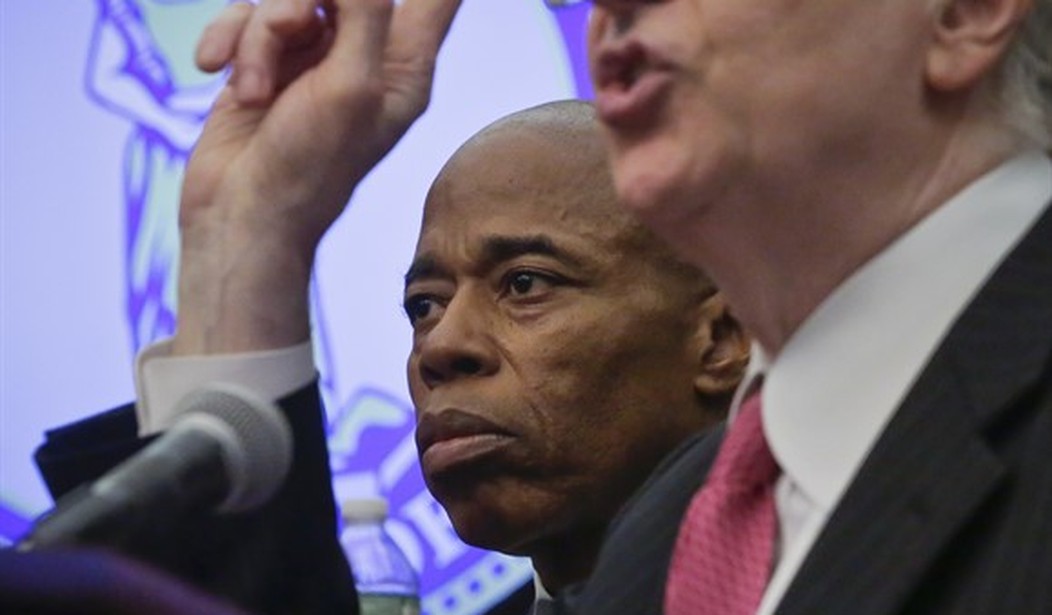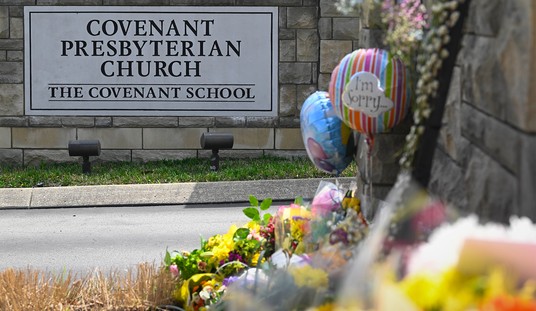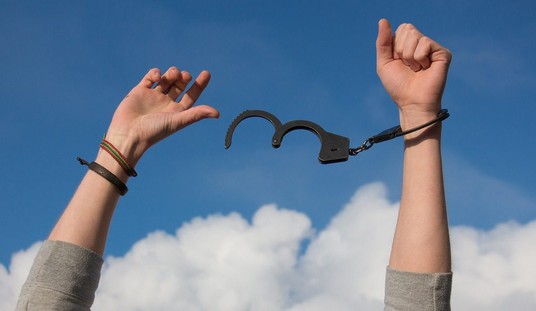I’ve been pretty critical of Eric Adams and his gun control-centric strategy to fight crime in New York City, but I’ve got no complaints about this aspect of the NYPD’s 90-day plan to address a rapidly rising number of shootings across the city. My only question is why is this obvious strategy only coming into focus now?
The “2022 Crime Plan” lays out the department’s objectives to tackle “crime, fear, and disorder” across New York City in the first three months of 2022.
At the top of the list is reducing the number of shootings compared to last year by focusing on the suspects and neighborhoods responsible for driving up the city’s gun violence rate, the internal memo said.
Trigger-pullers from last year who have been involved in multiple and recent incidents will now be included on a list so all units are aware of the offenders in their areas, according to the crime plan.
“These ‘trigger-pullers’ are responsible for a disproportionate share of the violence in the city and are the main drivers of violence in the area,” the memo noted.
The memo also directs more patrols in areas with high rates of gun violence.
“Patrol deployment must be heavily directed to hotspots of gun violence,” the memo said.
The vast majority of people (mostly young black and Hispanic men) arrested in New York City for possessing a gun without a license aren’t accused of any violent crime and have no serious criminal history to speak of. The recent brief filed with the Supreme Court by NYC public defenders arguing in favor of overturning the state’s “may issue” carry law is chock full of examples of people being turned into “violent felons” for simply possessing a gun without a license that the state refuses to give to the average citizen. Arresting these guys allows for politicians to say they’re getting guns off the street, but if they’re not the ones pulling the trigger then it’s not actually saving any lives or stopping the increasingly common shootings in New York City.
You’d think this would be pretty basic stuff, but according to the crime plan released by the NYPD right now the city’s hottest crime spots rarely see a law enforcement presence unless they’re sent there on a call.
“The Department is averaging less than four directed patrols/community visits per week at the top 100 blocks for gun violence. Most of those directed patrols are not at relevant days and times,” the crime plan added.
“While directed patrols are an imperfect measure of ‘engagement,’ they tell us
whether we are spending discretionary time in violence-prone areas. We are not. This
must change immediately.”The plan calls for “tightly-managed saturation patrols” in areas where gun violence is heavy.
Basically, the vast majority of the time police are in these areas is when they’re responding to a crime. Not only does that mean officers are being reactive and not proactive, but it can also make it harder to get cooperation and help from the residents in these neighborhoods, who believe there’d be less violence if there were more officers around when the bullets weren’t flying.
A few years ago, reporter Jill Leovy wrote a fascinating book about a homicide in Compton, which ended up also being a much bigger story the relationship between police and the community they police called and why witnesses are in many cases reluctant or unwilling to testify. I write a lot about the soft-on-crime sentences handed out in too many cases, but her book really brought it home to me in a way I’d never really thought about before. Imagine you’re the sole witness to a shooting, and you’ve seen this suspect walk in and out of jail multiple times over the past couple of years. You also know he’s got a temper, and he’s probably got associates who are willing to help him out even if he is held without bail. Witness intimidation is a crime, but it’s also underreported.
Particularly in communities dominated by gang and drug-related crime, residents have seen firsthand that offenders are capable of violence and brutality. Many also believe that offenders will return to the community after relatively brief periods of incarceration or will be able to arrange for intimidation by others while they themselves are incarcerated. The experience of violence in the community lends credibility to threats and creates a general sense of fear that discourages cooperation with police.
That’s not the only issue that causes people not to talk to police, but it is an issue, and officers spending more time in these crime hot spots should help in that regard. I do worry, however, that despite the Democrats’ newfound appreciation for law-and-order, there will still be prosecutors and judges willing to return suspects to the community at large, even when they pose a flight risk or a risk to community safety.
Despite those concerns, I do hope this strategy is as successfully deployed as it’s been in Dallas, where officers saw a double-digit decline in homicides within months of targeting just 50 or so of the city’s 100,000 “micro grids” mapped out by the Dallas PD. This, to me, is the only kind of “common sense gun control” that I can endorse; going after the most violent and prolific offenders and removing them from society for as long as the law allows. And given the fact that New York City could soon be forced to acknowledge the right of the average citizen to bear arms in self-defense, I’d argue that if Eric Adams really wants to be proactive he’d start working on a “shall issue” licensing system for the city and start encouraging anyone who wants to carry a gun to do it legally while putting the resources of the NYPD behind a targeted effort against repeat offenders in high-crime hot spots.
As much as I’d love to see that, it ain’t happening. Adams may be a moderate Democrat by New York standards, but he’s not pro-shall issue by any means. We’ll have to wait for the Supreme Court to hopefully restore the right to carry to New Yorkers, but in the meantime Adams’ latest strategy has the potential to at least take some of the more prolific offenders off the streets… at least until a judge lets them out on their own recognizance a few hours later.









Join the conversation as a VIP Member